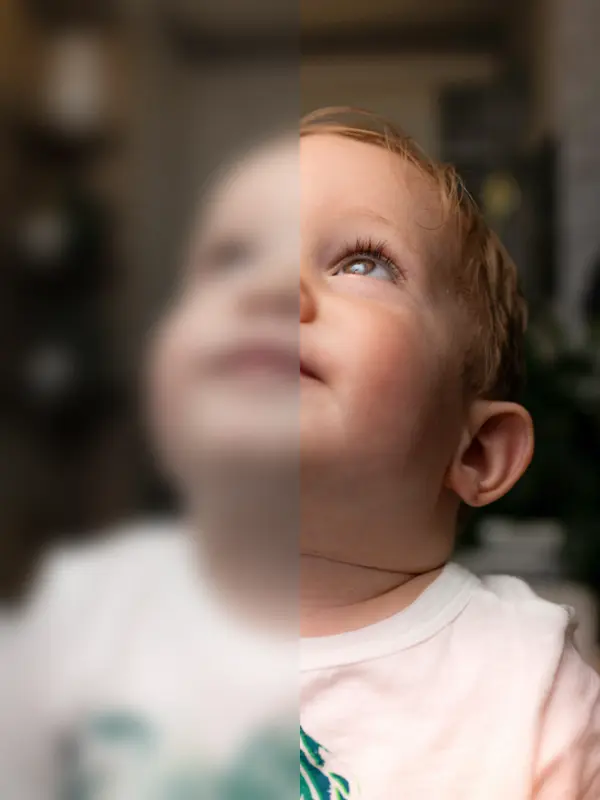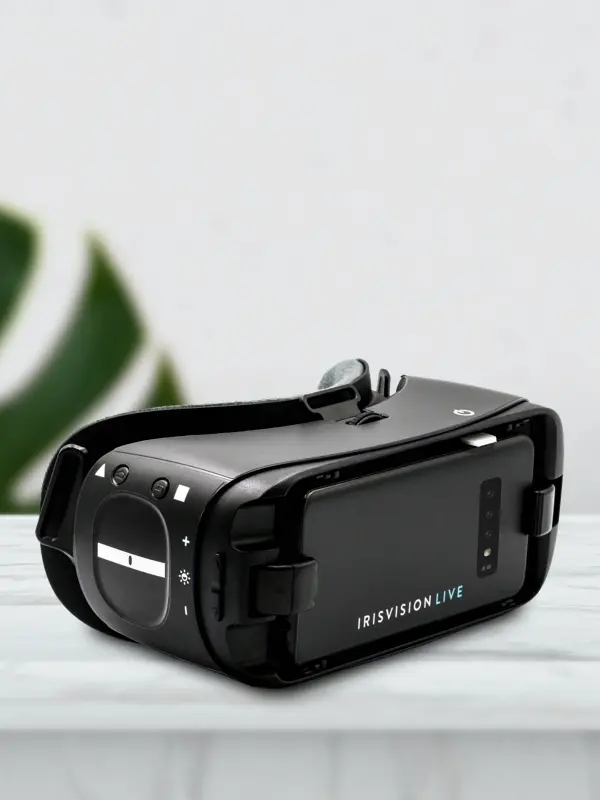
#LIVE2.0 #Review
Vision impairment is found amongst the top ten disabilities in the US amongst adults 18 years and older. Though this fact alone is upsetting enough, the situation of vision disabilities worsening due to optic nerve damage and eye conditions in children younger than 18 is more disturbing.
The ratio of children younger than 18 years with a diagnosed eye condition is around 6.8% according to the Centers for Disease Control and Prevention (CDC). This means that around 547,083 children in the United States are living with vision difficulties according to the American Community Survey (ACS) 2019. Alarming, isn’t it?
Human vision is mainly controlled by the optic nerve, also known as the second cranial nerve. It is a bundle of more than a million nerve fibers present at the back of the eye which sends sensory information for vision from the eye in the form of electrical impulses to the brain.
If the optic nerve is pressed or damaged, it can result in vision loss. The type and severity of vision loss depend on the place where the damage has occurred.
There are several factors involved in damaging the optic nerve. These include elevated pressure in the eye, trauma, injury, shock, poor blood flow, radiation, toxins, and various eye diseases. The diseases of the brain and central nervous system can also cause optic nerve damage. These diseases include:
Optic nerve damage is most commonly caused by severe eye conditions such as glaucoma, optic neuritis, optic nerve atrophy, and optic nerve drusen.
Low vision is an alarming indicator of a number of inconveniences linked to it. The complications connected to low vision are as follows:

Glare light sensitivity refers to the loss of visual acuity in bright lighting. A person with glare light sensitivity sees a washed-out image or a glare as the standard light overpowers their visual system. In adults, glare sensitivity is often caused by cataracts.
Vision problems do not always knock at your door before showing up. Rather, in most cases, vision problems break in and a person becomes aware of its presence when it is too late. The human eye goes through drastic changes as a person ages. These changes can dramatically affect vision or even lead to blindness.
However, there are a few simple preventive measures that can avert these vision problems.
Keep a check on your blood sugar levels: According to the Centers for disease control and prevention (CDC), about 90% of cases of blindness due to diabetic eye disorders can be prevented by early detection and intervention. By keeping the ABCs of diabetes i.e, blood sugar, blood pressure, and cholesterol in check, one can prevent vision loss and blindness that the diabetic eye diseases cause.
Maintain healthy eating habits: Those carrots you have been eating for a better vision are good but not enough! Add leafy green vegetables such as spinach or kale, fruits, and vitamin-enriched foods to your plate. Omega 3s are also great for the eyes, hence add fish high in omega 3 fatty acids such as tuna or salmon in your diet.
Refrain from Smoking: Research has proven that there is an undeniable link between smoking and some serious eye conditions such as macular degeneration, cataracts, and optic nerve damage. All of these severe diseases can eventually lead to blindness. The cyanide present in the cigarette smoke goes into the bloodstream and destroys the cells of the eyes.
Let your eyes rest: Keeping your eyes glued to the screen for long periods of time can lead to dry eyes as a person does not blink much while viewing a screen up close. The 20-20-20 rule is recommended while working for a longer time on the screen. According to this rule, after watching the screen for straight 20 minutes, the person should look at something that is 20 feet away for 20 seconds.
Get regular comprehensive eye examination: You might believe that your vision is perfectly fine. But it is recommended that you get your eyes regularly examined by your eye care professional so that any signs of damage or a severe eye condition can be detected before it is too late.
If you are wondering whether the optic nerve damage is curable, the answer is No. Unfortunately, the optic nerve once damaged can never get back to its original form. It is composed of nerve fibers that cannot regenerate or heal themselves. This means that the optic nerve damage is preventable but not reversible.
Keeping in view the dire need of providing people with low vision a worthwhile and lasting solution, numerous technological inventions have been made to counter the drastic effects of acute eye conditions.
The optic nerve damage that is a result of serious eye diseases is immedicable. But as the researchers in the eyecare industry have been persistent in their search for an all-in-one solution, the low vision glasses came forth as a visual assistive device leveraging the leftover vision of the eye.
Revolutionizing the lives of people with visual impairments, low vision glasses have emerged as a game-changer. IrisVision Live is one of the most innovative and groundbreaking low-vision headsets with advanced remarkable features and software lenses for each setting. IrisVision Live improves the visual acuity of the eye by targeting the functional areas of the eye and amplifying the leftover vision.
People with optic nerve damage have blurred vision. They cannot see the sharpness of the image or the fine details of the object. This means that they have a hard time reading text from printed surfaces or a screen. IrisVision Live comes with 3 distinctive modes dedicated to assist the users in reading, namely, IrisReader with OCR, colored reading mode, and reading line mode.
Moreover, people with optic nerve damage also suffer from visual field loss. Does this mean missing out on watching your favorite team play football? Not anymore! With up to 70 degrees field and 14X magnification, the scene mode installed in the IrisVision Live headset assists in countering the visual field loss in indoor as well as outdoor spaces. The peripheral vision loss, also called the tunnel vision can be corrected using scene mode.

Lannie Dennis with optic nerve damage used to miss out watching his grandson playing his favorite sports. After using the IrisVision Live headset, this is what Lannie had to say,
“…my grandson who plays football, lacrosse and basketball, people would say there he goes, he made a touchdown. But I couldn’t see him. But now I can enjoy his games.”
Furthermore, blurred vision can also hinder your plans to go on independent shopping sprees as it is difficult to read the labels of the products sitting on a shelf in your favorite store. The bioptic mode and bubble view mode installed in the IrisVision headset allows the user to magnify the specific area of interest without losing the broader context of the surroundings.
Additionally, people with low vision also have difficulty in identifying objects in dark settings or at night. IrisVision is to the rescue once again! The flashlight feature in the headset lights up dark environments without using optimal lighting.
Support
See and Connect Today!
IrisVision Global, Inc.
5994 W. Las Positas Blvd, Suite 101
Pleasanton, CA 94588
Email: [email protected]
Support: +1 855 207 6665
Support
See and Connect Today!
IrisVision Global, Inc.
5994 W. Las Positas Blvd, Suite 101
Pleasanton, CA 94588
USA Email: [email protected]
Support: +1 855 207 6665
Support
See and Connect Today!
IrisVision Global, Inc.
5994 W. Las Positas Blvd, Suite 101
Pleasanton, CA 94588
Email: [email protected]
Support: +1 855 207 6665